 by our College Data Analytics Team
by our College Data Analytics TeamCleveland Institute of Music total enrollment is approximately 381 students. 234 are undergraduates and 146 are graduate students.
Male/Female Breakdown of Undergraduates
The full-time Cleveland Institute of Music undergraduate population is made up of 51% women, and 49% men.
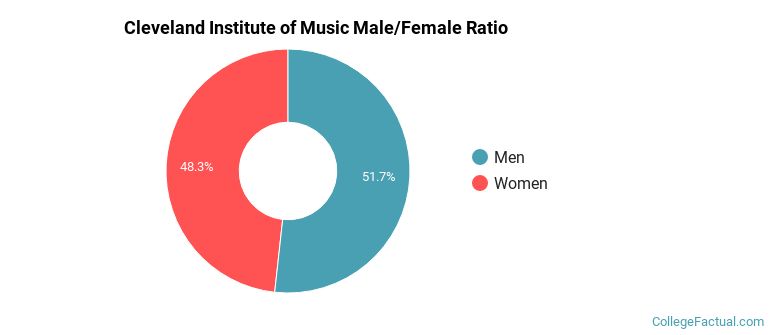
For the gender breakdown for all students, go here.
Cleveland Institute of Music Racial/Ethnic Breakdown of Undergraduates
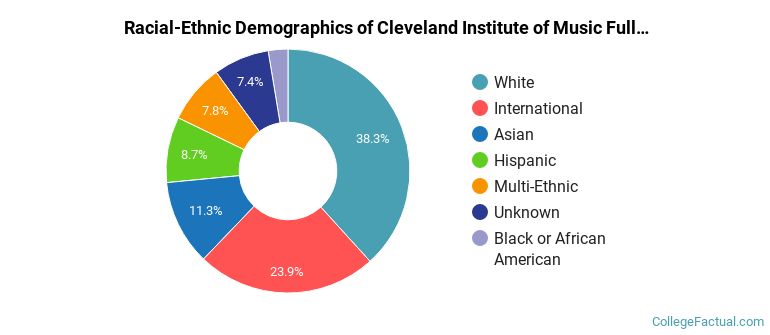
| Race/Ethnicity | Number |
|---|---|
| White | 83 |
| Asian | 52 |
| Unknown | 51 |
| International | 41 |
| Black or African American | 6 |
| Hispanic | 1 |
| Native Hawaiian or Pacific Islander | 0 |
| Multi-Ethnic | 0 |
See racial/ethnic breakdown for all students.
Male/Female Breakdown of Graduate Students
About 60% of full-time grad students are women, and 40% men.
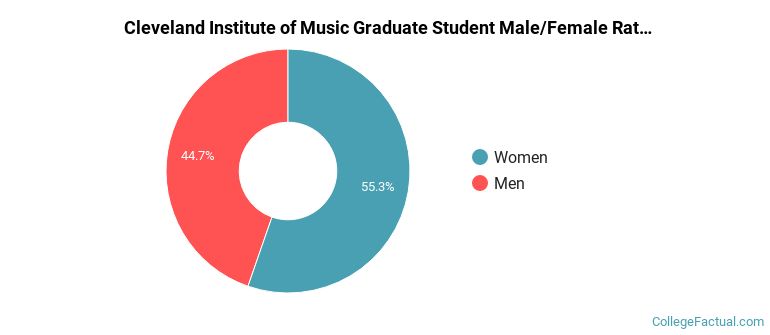
For the gender breakdown for all students, go here.
Cleveland Institute of Music Racial-Ethnic Breakdown of Graduate Students
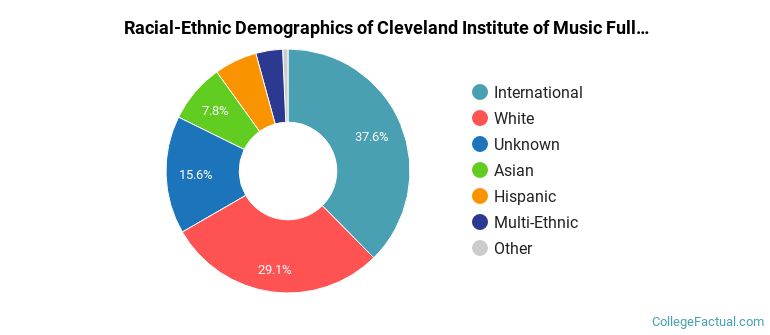
| Race/Ethnicity | Number |
|---|---|
| White | 52 |
| International | 38 |
| Asian | 36 |
| Unknown | 14 |
| Black or African American | 5 |
| Multi-Ethnic | 1 |
| Hispanic | 0 |
| Native Hawaiian or Pacific Islander | 0 |
See racial/ethnic breakdown for all students.
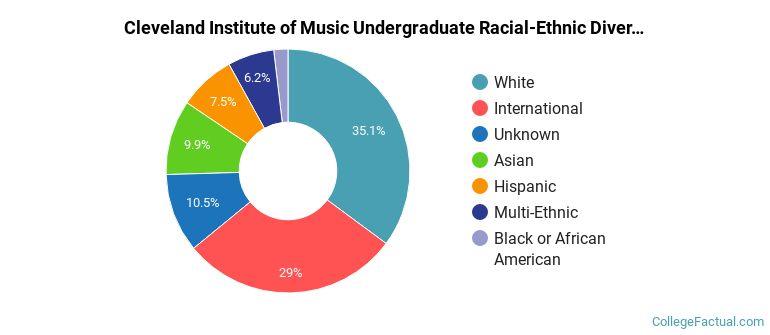
| Race/Ethnicity | Number |
|---|---|
| White | 136 |
| Asian | 88 |
| International | 79 |
| Unknown | 65 |
| Black or African American | 11 |
| Hispanic | 1 |
| Multi-Ethnic | 1 |
| Native Hawaiian or Pacific Islander | 0 |
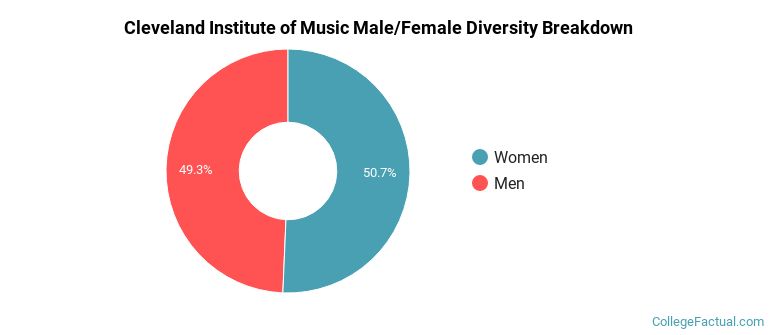
There are approximately 209 female students and 172 male students at Cleveland Institute of Music.
Cleveland Institute of Music ranks 141 out of 2,183 when it comes to geographic diversity.
92.86% of Cleveland Institute of Music students come from out of state, and 28.33% come from out of the country.
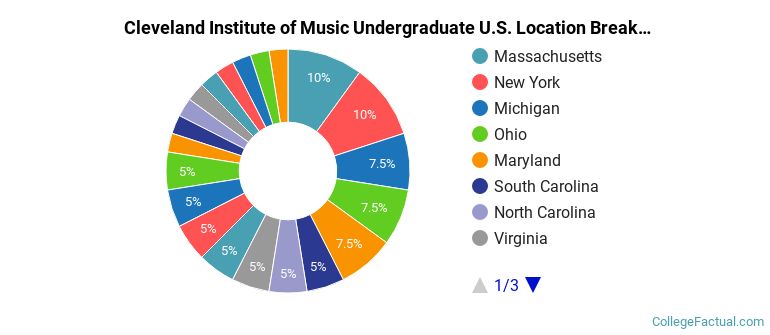
The undergraduate student body is split among 21 states (may include Washington D.C.). Click on the map for more detail.
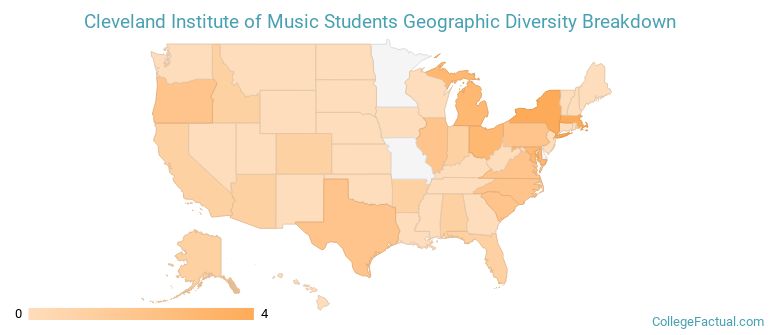
| State | Amount |
|---|---|
| Massachusetts | 4 |
| New York | 4 |
| Maryland | 3 |
| Michigan | 3 |
| Ohio | 3 |
Students from 32 countries are represented at this school, with the majority of the international students coming from China, South Korea, and Taiwan.
Learn more about international students at Cleveland Institute of Music.
A traditional college student is defined as being between the ages of 18-21. At Cleveland Institute of Music, 44.27% of students fall into that category, compared to the national average of 60%.
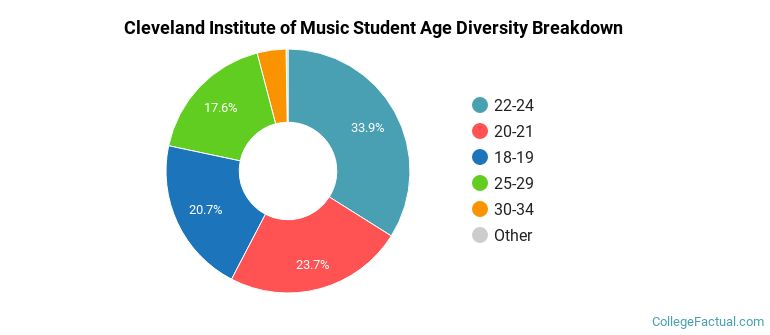
| Student Age Group | Amount |
|---|---|
| 22-24 | 133 |
| 20-21 | 93 |
| 18-19 | 81 |
| 25-29 | 69 |
| 30-34 | 15 |
| 35 and over | 1 |
| Under 18 | 0 |
Footnotes
*The racial-ethnic minorities count is calculated by taking the total number of students and subtracting white students, international students, and students whose race/ethnicity was unknown. This number is then divided by the total number of students at the school to obtain the racial-ethnic minorities percentage.
References